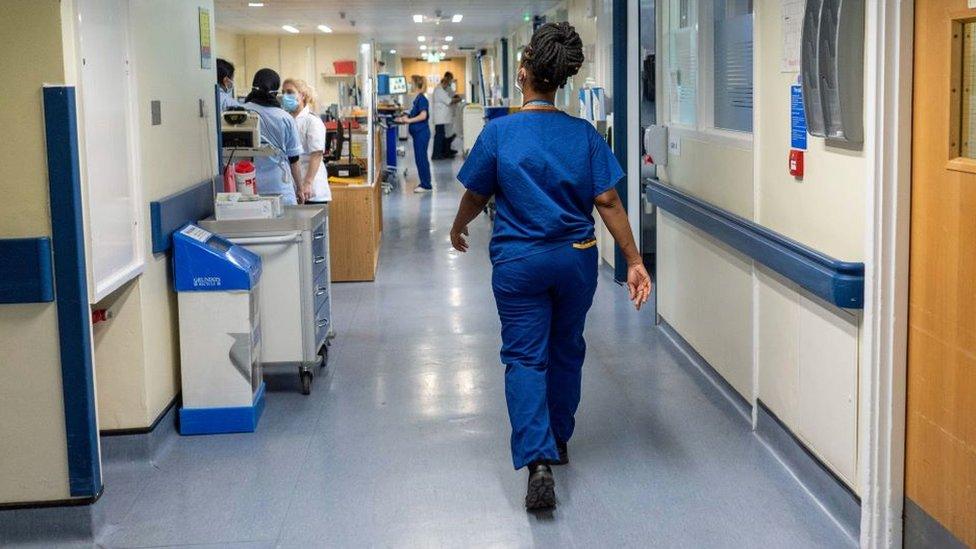Ambulance pressures: 'You can't get to everybody'
- Published

Technician Aaron McGregor and Paramedic David Reid
Halfway through a Monday afternoon in mid-December, there were 14 ambulances queuing outside A&E at Edinburgh Royal Infirmary - over half of the available fleet at the city's main ambulance station.
While shadowing a shift with paramedic David Reid and technician Aaron McGregor, the unprecedented challenges the service now faces became immediately clear.
Latest figures show that in the week up to 4 December, one in 10 ambulances in Scotland waited almost two hours outside a hospital because there was no space in the emergency department.
That is a two hour wait where a patient, who may be seriously unwell, is unable to get the care they need, and possibly 10 hours or more for a patient who has called 999 to find there are no ambulances free.
When I first started reporting on the NHS six years ago, such delays at emergency departments would have been headline news, but it happens so frequently now that it is barely covered.
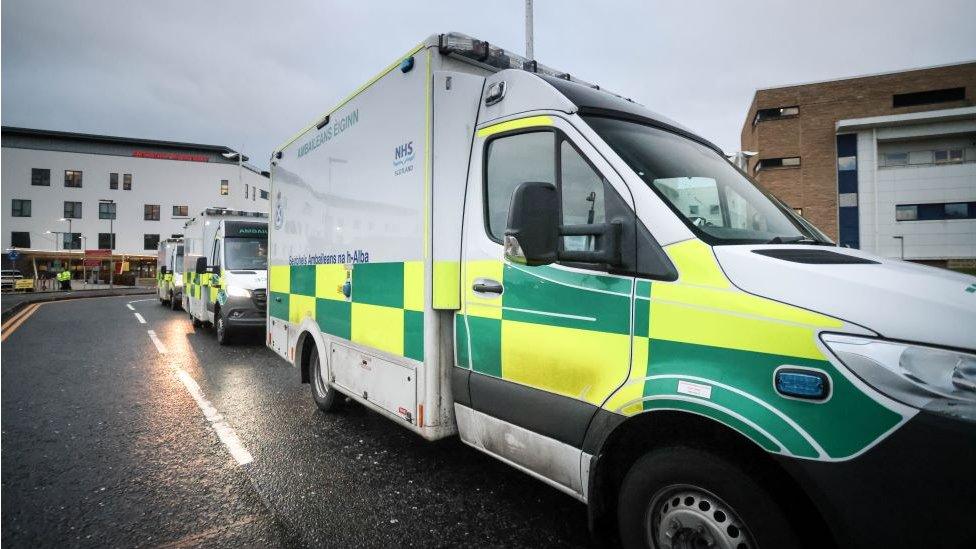
Ambulances queuing outside the emergency department
Staff say this did not happen a few winters ago, but sadly it is becoming the new normal.
At 07:00, David and Aaron switched their radio system on and were immediately dispatched to a call, categorised as yellow, that had been in the system overnight.
This type of call is defined as "a patient who has a need for care but has a very low likelihood of requiring life-saving interventions".
For example, they might be patients who have tripped or fallen but not sustained any serious injury.
Sirens and blue lights on, but barely a minute into the journey and they were diverted to a category red call. A woman had collapsed in a park and was unconscious.
That was to be the pattern of the day, setting off to a patient who had been waiting hours, but quickly being diverted to a higher priority emergency.
A child with breathing difficulties, an adult who was in and out of consciousness and then a baby who had had a seizure.
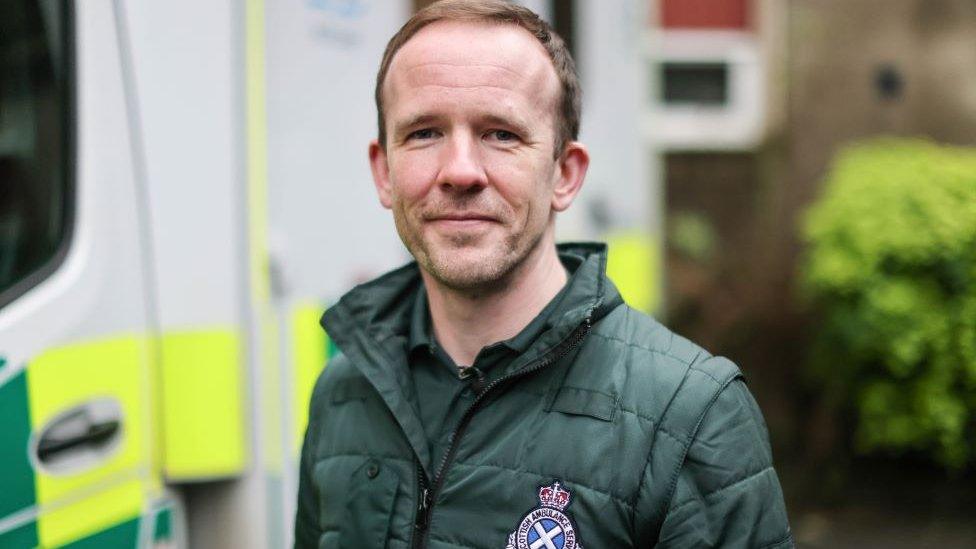
Paramedic David Reid says his crew is regularly diverted between jobs
Paramedic David Reid says it is hard sometimes knowing you can't get to everybody that needs you.
He told BBC Scotland News: "Often you are going somewhere where you think this person needs an ambulance and then something else comes in and you're diverted to that but you just need to remember that hopefully there are other ambulances and someone will get to them soon."
There were several trips to Edinburgh Royal Infirmary on that shift.
Its emergency department is the busiest in Scotland, but it is nowhere near the worst for ambulance turnaround times.
The latest Scottish Ambulance Service (SAS) data shows that the median ambulance turnaround time here is 45 minutes, while at the University Hospital Monklands the figure is one hour and at Aberdeen Royal Infirmary it is an hour and 46 minutes.
But there are efforts being made to find solutions to the unprecedented pressures.
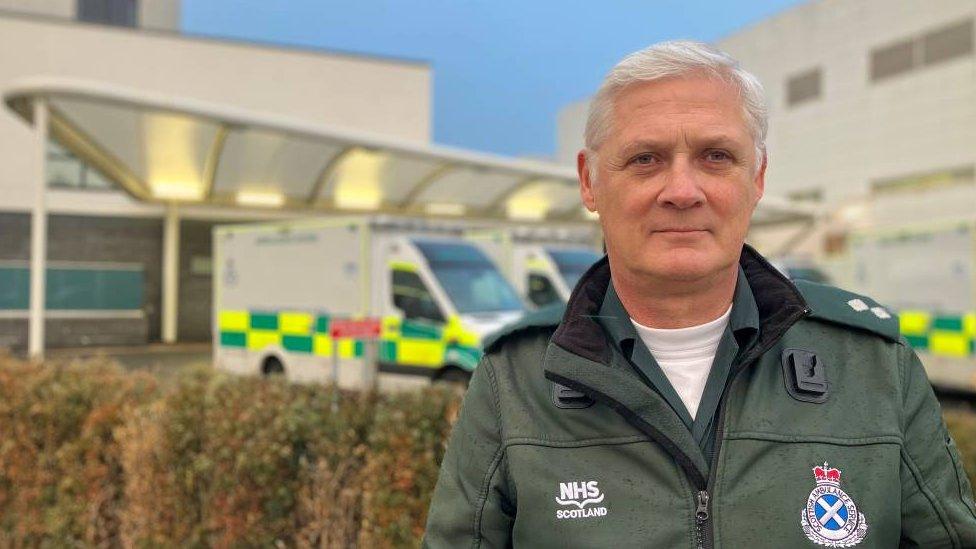
Paramedic Ian Stark says pressure on the ambulance service is higher than ever
Paramedic Ian Stark has been with the Scottish Ambulance Service for 30 years.
He is now a Hospital Ambulance Liaison Officer (Halo) at the Edinburgh Royal Infirmary, and his job is to help triage patients when they arrive at A&E . That involves managing their care in a corridor while they wait for space to become available in the actual emergency department.
They have room for four patients and while they are not ideal conditions to deliver care, the system does help a get a few ambulances back on the road.
Ian says pressures on the service are higher now than he has ever experienced adding that since October, demand has gone "through the roof" with no signs of it slowing down.
"The vast majority of people who come into hospital need to be here," he said, "We're talking about strokes, cardiac arrests, overdoses and falls and breaks of the elderly."
The trouble is, there is just no-where for them to go.
Record numbers of people are unable to get out of hospital when they are ready to be discharged because social care cannot be found.
That means beds for patients who need them cannot be found and waits in the emergency department or in the ambulances get ever longer.
Emergency Medicine doctors that I often talk to say they have never worked in such perilous conditions where people are dying who may have survived if they had only been admitted more quickly for the specialist care they need.
It is hard to know what the solution to this whole system pressure is.

Hospital waiting times in your area
Enter a postcode into our NHS tracker to find out what is happening with A&E, ambulances and hospital waiting lists in Scotland and across the UK.

More and more respected institutions like the Royal College of Physicians of Edinburgh, or the British Medical Association say we need fundamental reform of health and social care, and that starts with being honest with the public about what the NHS can and cannot afford.
In answer to that, Health Secretary Michael Matheson told me that he will outline long-term plans for the NHS and social care in the new year but he ruled out any prospect of patients having to pay for care.
In the meantime, people are dialling 999 and stretched services continue to do their best.
With £50m of investment to get through winter, the SAS has set up a new system in the control room where doctors, nurses or advanced paramedics can help redirect patients to get the right care for them.
And improvements in training and alternative pathways mean that some patients can be diverted away from hospital when it's not needed.
On our ride-a-long, David and Aaron were able to refer a man in his 80s with breathing difficulties to a local respiratory team, saving both them and the patient a trip to A&E that wasn't necessary.
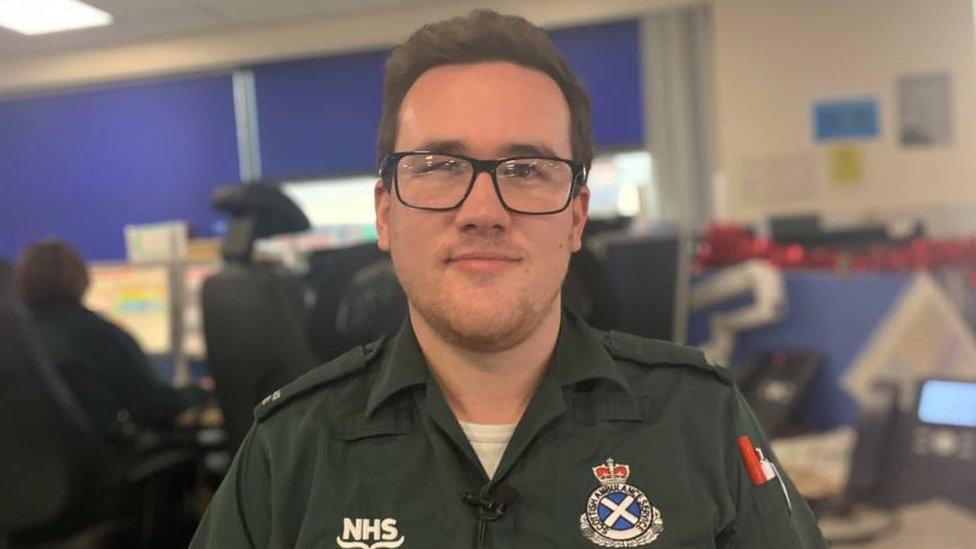
Emergency dispatcher Connor Hull says there is a limit to how far they can meet demand
Nevertheless, emergency dispatcher Connor Hull says the service has no choice but to be pragmatic.
"We get a big list of emergency calls and have a small resource of ambulances and we need to balance and juggle how we get to each and every patient as quickly and effectively as we can," he told BBC Scotland News.
"Ultimately if we have got nobody to send there is not a huge amount we can do."
Related topics
- Published31 October 2023
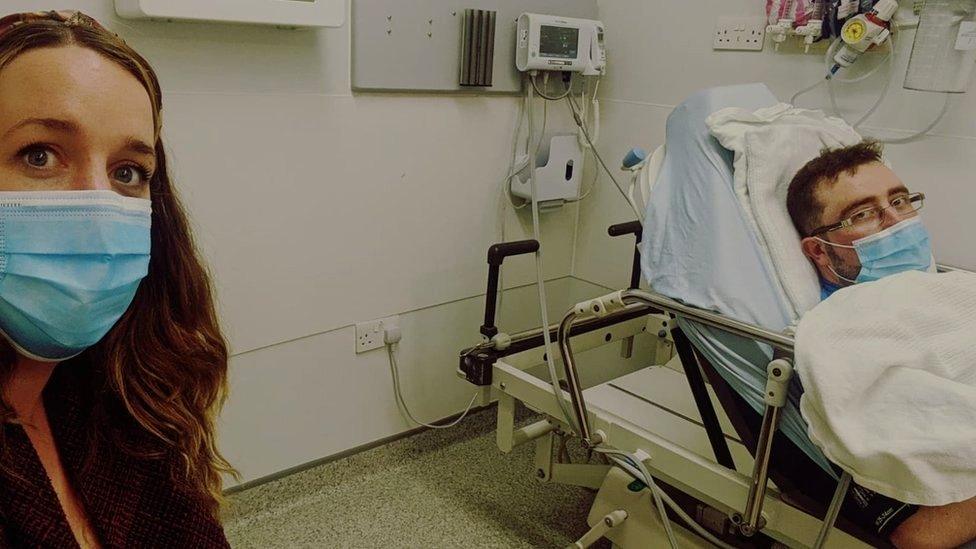
- Published6 December 2022
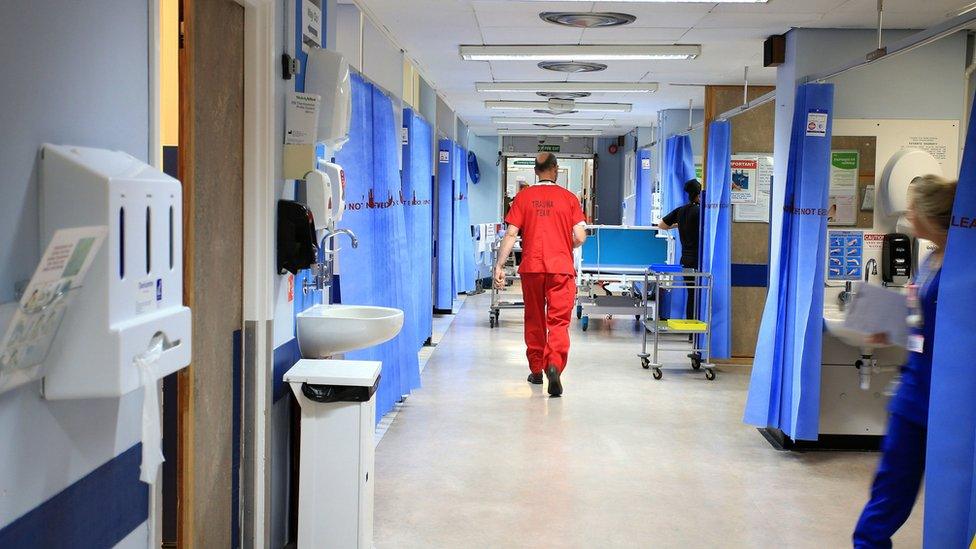
- Published28 November 2023
